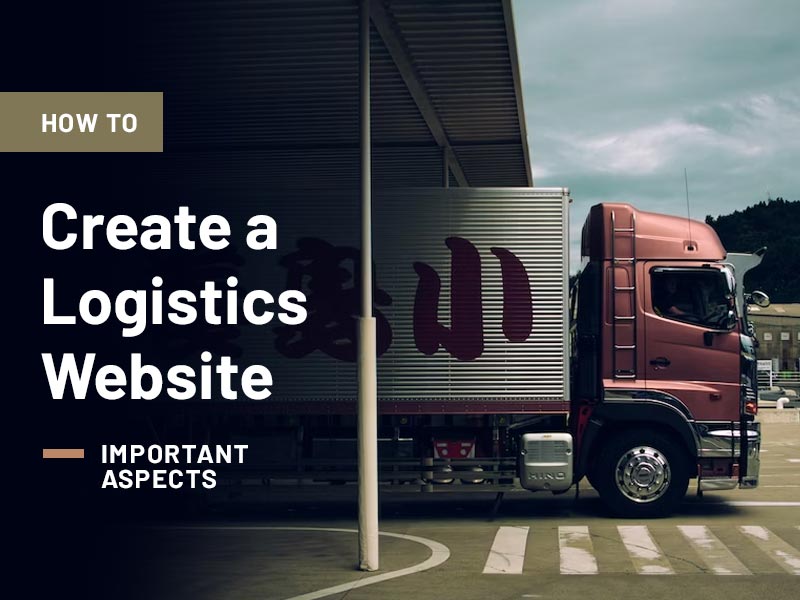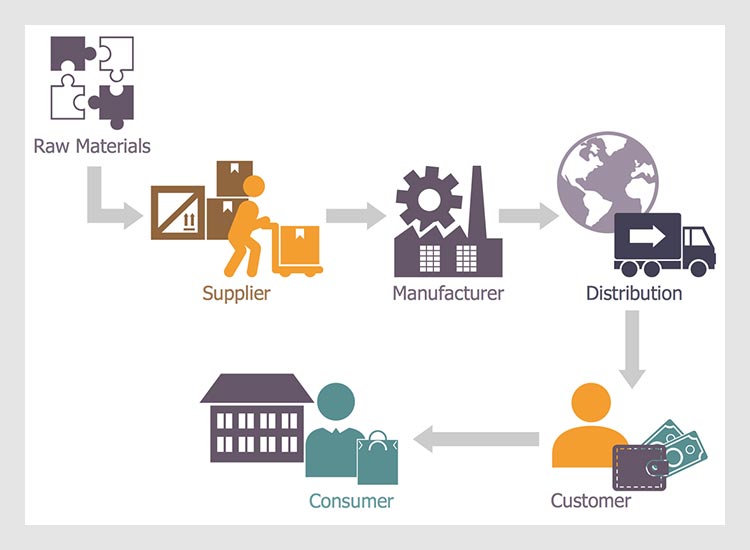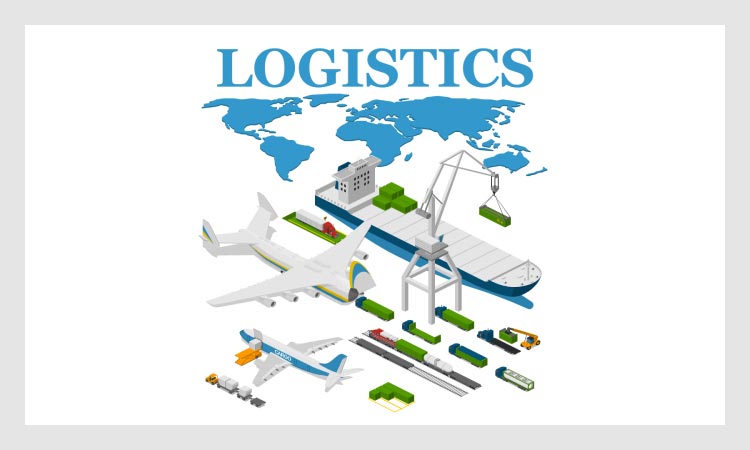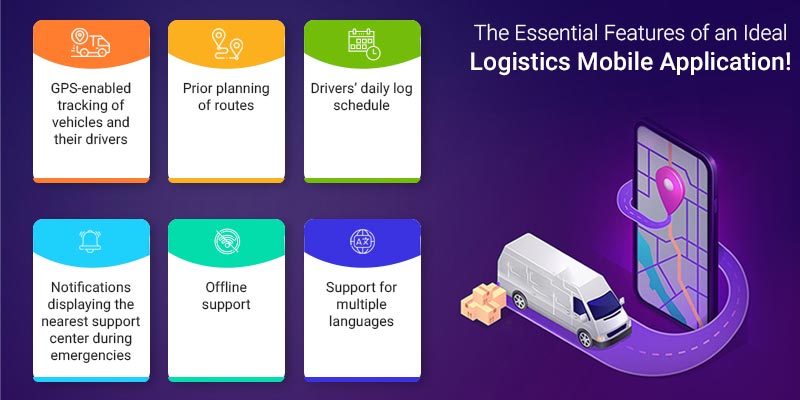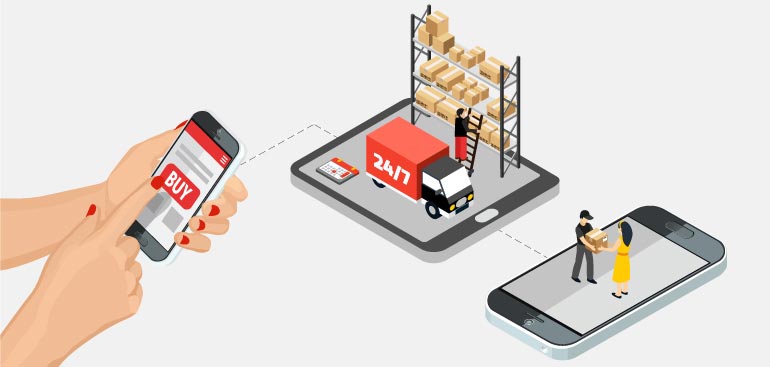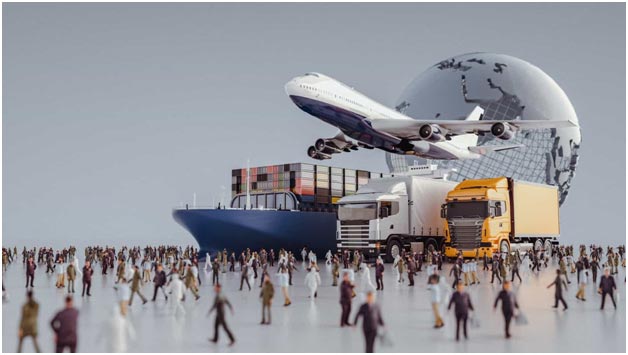In the modern digital age, businesses must have a strong online presence regardless of size or industry. This also applies to the logistics industry. A functional and well-designed website is essential to your digital strategy as it serves as the cornerstone for your day-to-day operations. The global logistics industry is one of the backbones of worldwide trade, with a projected market size of over $14.08 trillion by 2028.
Designing and developing a website for your logistics company will be an overwhelming task—but it’s also exciting. It requires careful planning, attention to detail, and an understanding of your target audience’s needs and expectations.
You must establish clear goals and objectives to guide you throughout the development and design process. You’ll also need to consider the visual elements that will make up your website. Features like online tracking, instant quotes, and customer support channels will enhance the user experience and differentiate your logistics services. Your website must be mobile-responsive since more and more people access the web through their smartphones and tablets.
Let us walk you through the essential stages of the website design and development process—exploring essential elements like user experience (UX), search engine optimization, content creation, and more. But before we delve deeper, let us know why your logistics business needs a website.
Why having a website is crucial for your logistics company
A website serves as the primary marketing tool for the majority of firms. Potential customers will learn more about your business by having the appropriate information in front of them before choosing to work with you.
A website is crucial for a logistics company for several reasons. Here are the top reasons why your logistics company needs a website:
Digital presence
A website acts as your storefront in the modern digital age—enabling potential consumers to locate and learn about your logistic services. It makes you more noticeable in the internet marketplace and enables you to reach a wider audience.
Business credibility
A professional-looking website raises the credibility of your business. It gives potential customers confidence by proving you are a reliable and legitimate logistic service.
Information hub
A website offers a single spot where you will be able to distribute crucial facts about your business, services, locations, contacts, and other pertinent information. In certain cases, potential consumers will make use of it as a resource to learn more about your expertise and products.
Customer convenience
Customers will learn more about your logistics services whenever they want by visiting your website. This will help them learn about your skills quickly, follow shipments, seek bids, and get in touch with your staff, saving both sides time and effort.
Marketing and lead generation
You sometimes use a website to employ various digital marketing methods to attract new clients. In order to acquire new customers, it’s important to ensure that your logistic website is search engine optimized, launch targeted advertising campaigns and provide informative content.
How does logistics work?
A logistics company functions in two directions—the forward direction and the reverse direction.
Let’s explore how each direction operates:
Forward direction — In the forward direction, a logistics company manages the movement of goods from the point of origin to the point of consumption. Here’s how it functions—fulfilling the following criterion:
- 1. Demand planning
- 2. Procurement
- 3. Transportation
- 4. Warehousing
- 5. Order fulfillment
- 6. Transportation management
- 7. Last-mile delivery
Receiving an online order, making arrangements for the item, packing it, creating an invoice, dispatching, and delivering the item to the customer’s door are all included in logistics in the forward direction.
Reverse direction — In the reverse direction, a logistics company manages the movement of goods from the point of consumption to the point of origin or other designated destinations. This typically involves the following activities:
- 1. Return authorization
- 2. Reverse logistics
- 3. Inspection and sorting
- 4. Repairs and refurbishment
- 5. Asset recovery
- 6. Recycling and disposal
How to create a website for your logistics business
Several aspects are essential to have in a website for logistics services, depending on the sort of business you are running. It depends on your business needs to explore which features will benefit you.
Here are some important aspects of designing and developing your logistics company.
Incorporate essential features and insurance services
A logistics website design must put your business in the best perspective, as the first impression often plays a great role. That’s why the main goal of the websites is to enhance user confidence. This will be achieved by including detailed information about company services, awards and certificates, loading time, visual consistency, advantages that clients will gain—and more.
Highlight instances to point out how the company undertakes complex tasks to fulfill the order promptly and solves difficult problems like how to insure a trailer interchange that protects the policyholder from damages to trailer contents or damages caused to another while using the trailer. Insuring a trailer interchange is crucial for mitigating risks as well as protecting the interests of all parties involved in the interchange agreement. It protects the financial interests of carriers and promotes a more secure and reliable logistics operation.
Accidents, theft, or damage during transit will result in substantial financial losses. Insurance coverage helps protect against these risks and ensures the responsible party will fulfill its obligations.
Real-time order tracking
A logistic website must include real-time order tracking since it improves client satisfaction and simplifies processes. Customers benefit from transparency and peace of mind by being able to track the progress and location of their shipments in real time. As they must independently track their orders—it decreases consumer inquiries and assistance requests. To track their shipment—the customer must enter the shipment ID into the tracking field and check its progress.
Real-time tracking allows logistics firms to manage inventory—plan routes more effectively, and spot delays or supply-chain bottlenecks. Overall, adding real-time order monitoring to a logistics website boosts operational effectiveness, lowers costs, and increases customer satisfaction.
Online ordering
For a logistics website to be effective—it must offer online ordering to provide clients with convenience, efficiency, and accessibility. By allowing clients to place orders from anywhere and at any time, ordering online simplifies the process, reduces the chances of errors, and improves the accuracy of orders—making logistics more efficient. Customers must be able to book their cargo 24×7 from any device using the logistics website.
It helps logistics businesses to compile useful information on consumer preferences and behavior, improving planning and decision-making. Online ordering raises consumer satisfaction, boosts operational effectiveness, and promotes business expansion.
Time and cost estimation
When building your logistic website—including estimated delivery times and costs is important. This information is valuable to customers as it allows them to plan and make informed decisions. Businesses will increase customer satisfaction and build trust by being transparent about delivery times and costs.
Time and cost estimates help logistics companies optimize their schedules, routes, and resources. This results in better control of client expectations, reduced delays, and increased production. Ultimately—including time and cost estimations on your logistics website will improve customer satisfaction, enhance operational efficiency, and drive commercial success.
Dependable online payments
Offering secure online payments on your logistics website is crucial for driving growth in the sector. By offering clients the option to pay for services directly on your site, you enhance the convenience and accessibility of your platform. Implementing a secure payment gateway is a smart move for logistics websites, ensuring the safety of transactions.
By offering various payment options, you cater to the preferences of different customers—expanding your customer base. Emphasizing dependable online payments strengthens customer trust, encourages repeat business, and contributes to the overall success of your logistics operations.
Usability for non-tech-savvy users
It’s essential to customize the website for all consumers if you want to become the go-to logistics provider in your area or worldwide. It is challenging for users to take the necessary action if they are unfamiliar with online ordering or seldom use Internet services. Make the necessary actions clear and simple to understand.
This aspect will be accomplished using an easy-to-use interface—the proper element order, large buttons, clear call-to-actions, and several other UX & UI design modifications.
Mobile browsing
Ensuring full mobile compatibility is crucial when developing a logistics website. It is vital to optimize web pages for easy readability and access on any device. All elements—such as buttons, forms, and shipment tracking features, must be conveniently placed and easily clickable. While designing an IoT mobile app for your logistics business is an option—it’s important to consider that many consumers need more device storage with using applications. Prioritizing mobile browsing on your logistics website becomes paramount for reaching a wider audience.
Live support chat
At a logistics website—it’s important to have options for consumers to get help with any issues or questions they have about their shipment. This includes live chat and contact forms, which allow customers to talk to a human for assistance with shipment tracking, documentation, delivery details, and more.
Designing a website for your logistics company
Creating a web design for your logistics business takes great thought and research. A user-friendly design, search engine optimization, and the inclusion of relevant content are crucial.
Your website will highlight your services, draw new customers, and improve your online presence in the cutthroat logistics market by incorporating an eye-catching design, easy navigation, and smooth functioning. Remember—a well-designed website will be a powerful tool for expanding and achieving business success.
